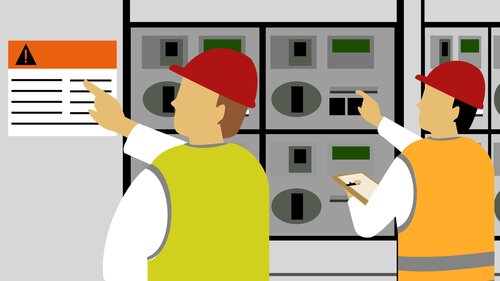It is worth hiring a qualified professional to inspect the electric safety devices.
A certificate of electrical safety is a document which can be used to pinpoint and rectify any problems that may be present in your property prior to they cause damage or injury. There is no legal requirement that requires the installation of electrical devices to be independently checked unless it is being replaced, significantly changed or moved, or a certification to operate was denied.
In other situations, the building codes only require equipment to be inspected by an experienced person who is not an electrician, but they must be aware of the work they are doing.
A typical electrical safety inspection involves testing the installation to make sure it meets all building regulations in force, IEE Wiring Regulations, and manufacturer’s guidelines. Issues could include excessive electrical wires, sockets that are overloaded or equipment that is not working properly, which could result in a fire.

The certificate will also cover appliances connected to the installation, for example, heaters, kettles or immersion heaters. These are therefore safe to use.
An experienced professional will conduct an electrical inspection. He will offer suggestions on how to deal with any issues before they lead to injury or damage.
If you lease your home, you may be entitled to ask for an electrical safety check under the terms of your lease agreement.
Electrical safety tips to help you stay safe when you are renovating your home
In addition to changing smoke detectors, professionals at the university suggest that homeowners follow the following safety tips during renovations:
1. If someone is using electricity from an area outside of the house Don’t pull the main switch or isolate circuit breaker. This is the case for appliances that are plugged into outlets controlled by a wall switch.
2. After turning off a circuit breaker wait for the power indicator to go out before starting to work on the wiring.
3. If you must switch off an isolated circuit breaker when an electrical device is attached to it, shut off electricity at the main switch prior to using the wires controlled by the circuit breaker.
4. Utilize an extension cable to supply the power. Utilize the shortest length of cord you can and ensure that it’s not overloaded. If you’re using a longer cord be sure that it is UL-approved for high-wattage appliances.
5. Take care when working with older wiring devices, especially three-way switches. These devices have not been in use for long years. If they’re not installed properly they could pose a danger of electrocution or shock.
6. Use only electrical fixtures tested to be compliant with Australian standards, like those manufactured by Schneider Electric, Wylex or HPM.
7. Be sure to keep candles out of any flammable materials. Also, make sure you don’t leave candles unattended.
8. Rubber-soled shoes are best, since they can be walked on dry terrain. Don’t use damaged extension cables. Do not cut the cord from an old device and plug it into another in the event that they’re both of the same voltage rating.
If you want to learn more, click RCD compliance check